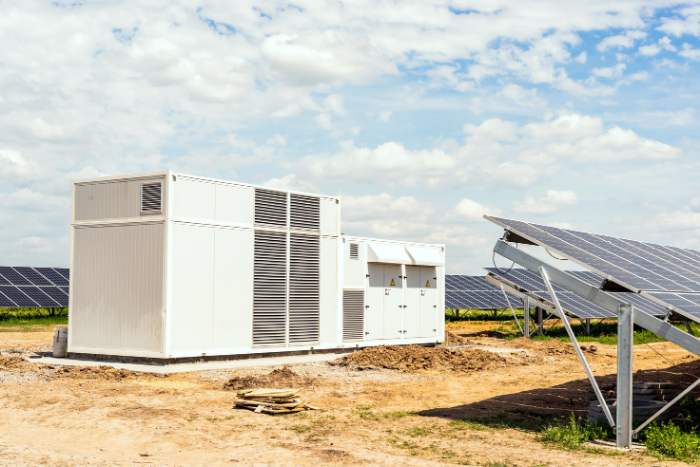Solar developers have to wait longer for power transformers as manufacturing capacity for this key component in large-scale solar projects has failed to keep pace with demand, slowing solar deployment in India, a study by Mercom found.
The outlet added that approximately 143 GW of large-scale solar projects are under various stages of development and another 96 GW of solar projects are pending auction, the demand for transformers is exploding, according to Q1 2024, the Mercom India Research.
The lead time for procuring 220 kV transformers has increased from 8-9 months to nearly 14 months, the report quoted Ashish Agarwal, Head of Solar and Storage at BluePine Energy, a renewable energy developer.
“Many Indian engineering, procurement, and construction (EPC) contractors are undertaking projects overseas and utilizing the Indian supply chain, leading to increased exports of power transformers,” Agarwal said.
Solar glass for manufacture of solar cells or solar modules will attract 10% Customs duty from Oct 1
According to India’s Budget 2024-25, solar glass for manufacture of solar cells or solar modules will attract 10% Customs duty from October 1 this year, reported PV Magazine, and other media houses. Tinned copper interconnect for manufacture of solar cells or solar modules will also attract 5% Customs duty from October 1.
“In view of sufficient domestic manufacturing capacity of solar glass and tinned copper interconnect, I propose not to extend the exemption of Customs duties provided to them,” said the finance minister in her budget speech.
The outlet added that Customs duty exemption on active energy controller (AEC) for use in the manufacture of renewable power system inverters will also lapse from September 30.
India’s RE share at 19.19% in energy mix, generated 61.8 BU RE in 2024-25 up to May 2024: Centre
The share of renewable energy in India’s total energy mix is at 19.19%, the government told Parliament. India generated 61.84 billion units (BU) of renewable energy in 2024-25 up to May 2024, Pralhad Joshi, minister of new and renewable energy told Parliament on July 24, 2024, ET reported.
The minister cited the data from Central Electricity Authority, shared the details of annual electricity generation from new and renewable energy sources in India, alongwith with its percentage share of total electricity generation from the past three years and the current year.
In 2021-22, the clean energy generation stood at 330 BU comprising 22.12% share of the total energy generation. The country generated 372.9 BU of green energy. In 2022-23, renewable energy electricity generation constituted 22.9% share of the total energy mix. In 2023-25, India generated 364.6 BU of clean energy, a 20.9% share of the total generation.
Indian and Canadian solar firms join forces to set up US factory
India’s solar firm Premier Energies and Canada’s Heliene are planning a 1-gigawatt solar cell factory in the United States to satisfy America’s demand for domestically made solar energy equipment, Reuters reported. Heliene and Premier Energies expect to begin production at their facility in the second quarter of 2026. The factory will be located in the Minneapolis, Minnesota, area. Solar manufacturers are counting on a new 10% tax credit to project developers when their facilities use American-made panels to drive demand for their products, the report explained.
The newswire said the US solar manufacturing industry needs a domestic supply of cells, the building blocks of solar panels, in order to make products that can qualify for a generous new subsidy for American-made clean energy equipment.
Currently, there are no US suppliers of silicon solar cells, and President Biden’s administration has been seeking to build up the domestic industry to compete with China.
The facility will supply Heliene’s existing US module factories, which are located in Minnesota.
Reliance starts pilots for massive solar, battery storage projects in Jamnagar
Mukesh Ambani’s Reliance Industries started pilots of its solar and battery energy storage projects in Jamnagar ahead of its start of production of 9.6 GW modules later this year, the Hindu BusinessLine reported. Ambani’s massive giga complex will spread over 5,000 acres as part of its new energy business, with an investment of over $10 billion.
The news outlet explained that the main components of the green energy ecosystem are the integrated solar modules, battery storage system and renewable energy feeding into the modular electrolysers that will be producing green hydrogen, which will be converted by fuel cells into electricity.
Reliance has already set the entire value chain for around $1.5 billion. It secured 74,750 hectare land for green hydrogen production from the Gujarat government. It got six plots from the Deendayal Port Authority to set up units to produce green hydrogen and green ammonia. It reapplied for Production-Linked Incentives (PLI) scheme for the manufacturing of 10 GWh Advanced Chemistry Cells. The company had secured PLI for ACC storage of 5 GWh in an earlier round in 2022, while it has also won PLIs for solar modules.
China adds 102.48 GW of solar in first half of 2024
Energy news outlet PV magazine reported that between January and June 2024, China has added a total of 102.48 gigawatts (GW) of solar installations, of which centralised solar plants make up 48%, according to data released by the National Energy Administration. By the end of June, the country’s total solar capacity reached 712.93 GW, the outlet added.
Total power generation capacity hit roughly 3.07 TW, up 14.1% from last year. Total installed wind power capacity also expanded to around 470 GW, marking a 19.9% increase. The nation added 216.88 GW of new PV capacity in 2023, up 148.12% increase from 2022.
About The Author
You may also like
Non-Fossil Fuels Generates One-Third of India’s Electricity in 2025
India on track to achieve 2030 clean energy target
India to add 45GW solar capacity in FY 2026: Study
Government Proposes for ALMM Expansion for Solar Backward Integration
China’s renewable energy expansion can fuel global energy transition: Report

